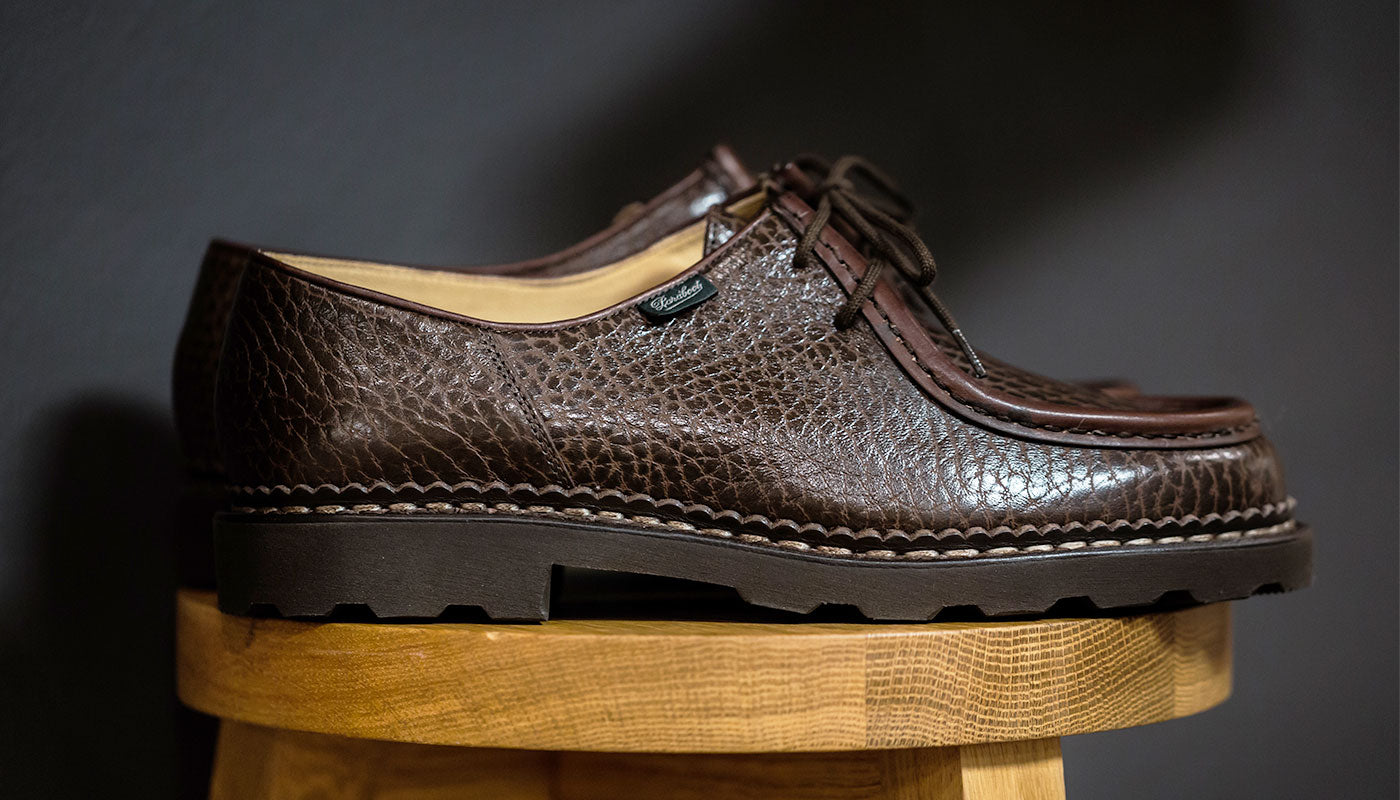At one point, all hope looked lost. Nearly half a century after it was established, Paraboot - one of the finest manufacturers of sturdy, rugged leather boots - was going to the wall. It was the dawn of the 1980s and the company had fallen into the trap of the post-war years, characterised by rapid unbridled expansion, racing inflation and easy credit. But with an oil crisis came the collapse of the dollar and the yen, and the small bootmaker from the even smaller village at the foot of the French Alps lost its largest customers. They struggled on for two more years, trying in vain to streamline the business. Eventually they threw the towel in and filed for bankruptcy. That should have been that, but the unions and trade tribunal believed recovery was possible. The ruling was for business to continue and it’s why we still stock Paraboot at Oliver Spencer Studio today.

The man who started it all was not born into business, wealth or commerce. Rémy-Alexis Richard, born in 1878 into a humble farming family, became a semi-skilled cutter at Chevron, one of a score of shoe factories in the small Isère village of Izeaux. These factories received orders from contractors "in the city", bought the leather, cut it and had the pieces assembled at home by farming families in the surrounding hills, before fixing them (by nailing or sewing them) onto wooden or leather soles. Rémy, being an enterprising young man, soon realised that these contractors from the cities earned more money than his own boss, and decided to try his luck; he went up to Paris with designs for his own models to sell them as a "factory agent”. His plan worked. Rémy had his first shoes manufactured by the factories in Izeaux – including the one he had just left – and sold them to the "major" clients in Paris. In 1908, he began to hire his own staff.

PARABOOT REIMS LOAFER |
PARABOOT AVORIAZ SMOOTH |
PARABOOT REIMS NAVY |
Rémy met Juliette Pontvert, the daughter of a wealthy notary and married her in 1910, founding his first company, Richard-Pontvert. He brought to the table his knowhow, designs and equipment; she contributed her dowry money as capital. War broke out in Europe shortly thereafter, but after Remy was injured, he was sent away from the Front and put in charge of repairing the army’s shoes, harnesses and other equipment. At the end of the war he returned to his business, which was a moderate success. He rented and then bought premises and a warehouse close to Les Halles market in Paris, bringing him closer to his clients. In 1920, he purchased his first factory in Izeaux, to gain better control of the manufacturing of sophisticated shoes with leather soles, as well as work boots with nailed wooden or leather soles. He registered the “Galibier” trademark for these boots in 1922.
Although he didn’t speak a word of English, he set sail for the United States in 1926, where he noticed the rubber “boots” worn by the Americans. This was something of an epiphany. Immediately upon his return Rémy put in motion the manufacture of his own boots with "layers" of latex added by hand on wooden lasts and vulcanised in stoves in order to make them entirely waterproof. He then had the idea of using this rubber to replace wooden soles which he eventually did with an old walnut oil press that made it possible to bake, and thus vulcanise, his shoes in steel moulds. Rémy registered the Paraboot name in 1927, from "Para" – a port in Amazonia, where the latex was exported from, and "boot" – the interesting new shoe he had discovered in the United States.
In 1937, Julien, Rémy Richard's son, got his feet under the corporate desk. Despite economic pressure to convert to a new cheaper construction method of glueing plastic soles to uppers, the 20 year old decided to preserve the traditional Goodyear method on thick leather soles and in 1945 he released the “Michael” model which is still to this day Paraboot’s poster boy.
Despite the Michael being hugely successful and worn by some of the world’s most celebrated climbers, explorers and adventurers, the aforementioned dark years rolled round and Paraboot found itself staring at bankruptcy. Whilst negotiating with the trade tribunal, 4th generation Michel Richard went to Italy in search of more efficient equipment and to understand the methods of his most formidable Italian competitors. The Italian stylists of a fashion distribution firm Michel had been negotiating with decreed that men needed to get themselves a new look: gone were the dark suit, shirt and tie and black thin-soled moccasins and in were tweed jackets, corduroy trousers and roll-neck knits. All that was missing was a thick-soled shoe, made from decent materials. Although they had all they needed in Italy, they chose the Michael model by Paraboot. Orders flooded in, ensuring that Paraboot is where it is today: one of the world’s finest leather bootmakers. Although the two historic factories in Izeaux and Fures are now closed, a new modern facility in Saint Jean de Moirans has guaranteed that Paraboot continues to craft rugged, versatile footwear of the highest order.
Shop the Paraboot collection at Oliver Spencer Studio, including the iconic ‘Michael’ model.


